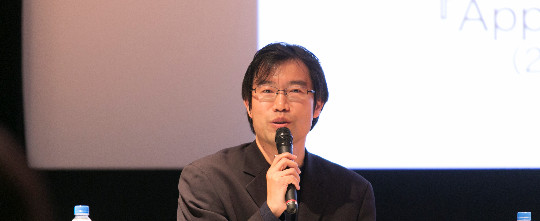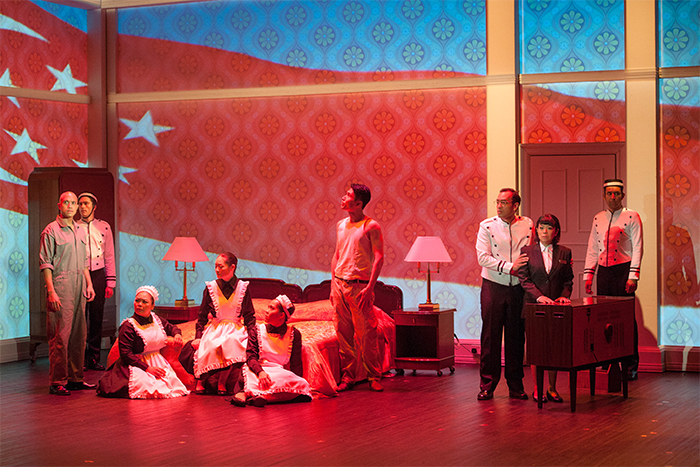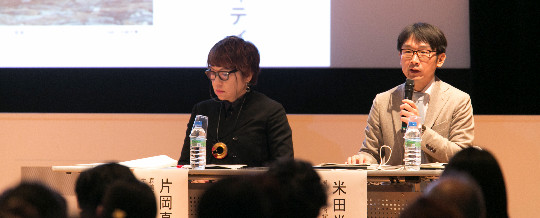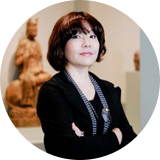Special Screening+Talk Show
Identity Issues in Singapore and Malaysia Seen through Films Talk show(2/3)


Ms. Matsushita, could you please tell us how Boo is situated in the Singaporean film industry? To what level is he recognized and reviewed?
Boo works earnestly on his films; sometimes he can be a little too serious. He doesn’t make commercial advertisement, and you can really feel that he has his own beliefs and convictions in making film. He has the skills to tackle various issues in Singapore head on while also making highly entertaining works, and this applies to Sandcastle. You can also see this in Apprentice, his second feature film that was screened at the Tokyo International Film Festival last year. Singapore carries out the capital punishment system, and if you are involved in drugs, even as a drug courier, you can be sentenced to death. Even if the starting point of the film was to question this reality, Boo does not portray this directly, but rather connotes it through the story of the executioner-apprentice relationship. Boo’s exceptional ability of expressing his objection against such issues by incorporating them into the story without any direct reference is also demonstrated in fields other than film. He is one of the members promoting LGBT rights through the movement “Pink Dot Sg. Rather than shouting from the rooftops or carrying out demonstrations, this annual movement takes a softer approach by gathering in a par wearing pink.
Just as Mr. Yoneda mentioned, Boo plans to exhibit his artwork at the “SUNSHOWER” exhibition?
We are currently discussing this internally, but are moving in the direction of exhibiting Happy and Free (2013) at the “SUNSHOWER” exhibition. The background behind Happy and Free (2013) is that Malaysia, including the states of Sabah and Sarawak on the island of Borneo, declared independence and became the Federation of Malaysia in 1963. Boo made a variety of works, in the form of related-materials, hypothesizing a world where Singapore did not declare independence two years later in 1965, and where it celebrates, as a part of Malaysia, the 50th anniversary of Malaysia’s unification with Sabah and Sarawak. This work was produced for the Singapore Biennale 2013. Behind the display of materials, there was a karaoke room where visitors could sing the song “Happy and Free,” celebrating the union in 1963. It is a work that situates Singaporean visitors in this hypothetical situation created by the artist where they are made to celebrate and also think about what could have happened if Singapore had not declared independence. When speaking about exhibiting this work, Boo said, “Japan is the birthplace of karaoke, and this work has some fun elements too, so I think it would be good to display it.”
Does that mean that visitors like us can sing at the venue? That sounds like fun. Ms. Kataoka, what other Singaporean artists and works are planned for the exhibition?
There is an artist called Lee Wen (1957 – ) who became famous in the 1990s for a series of works titled Yellow Man. I saw his performances when I was young, and he was walking in public with his entire body painted in yellow as a representation of the “yellow race.” The kind of identities that is made apparent or is evoked depends on the context, but considering his performance started in England, he was emphasizing the fact that he was self-aware of being “yellow” amidst a “white” society.
We also plan to introduce Amanda Heng (1951 – ). She is from approximately the same generation as Lee, and was also active as a member of The Artists Village. In her practice, she pursues her identity as a woman and an individual, and in 1996 she presented the Another Woman series which confronts her relationship with her mother. It is a photographic series that shows the transition from a mother-daughter relationship to a relationship between two women and dives into a deeper understanding of the identities [of both subjects]. Fast forward two decades, she produced a series called 20 Years Later (2016). Amanda, who by now has gone gray, is photographed with her mother in the same pose as the previous series. We plan to juxtapose both series in the exhibition.
Mr. Takiguchi, as I said earlier, I believe that you may be the one who is most familiar with Singapore’s performing arts scene in Japan. From your perspective, do you think that there are methods for expressing the issues of “identity” that are specific to performing arts and differ from film or fine arts? And if so, what are they?
I had received this topic in advance, so today I have prepared a video of a performance. It is a play titled Hotel by Singaporean theatre company W!LD RICE, which I also participated as a script translator. When I saw the credits at the end of Sandcastle, the names of Alfian Sa’at, who was the playwright for Hotel, and W!LD RICE both appeared. Hotel covers the fifty years prior to and after Singapore’s independence; so it covers the duration of one hundred years.
The video playing now is of the first act, which is set in 1915 and depicts an era when Singapore was still under British rule. A British Couple come to Singapore to run a plantation. In this scene, they arrive at the hotel that is the setting for this play, and speak with the bellman. The wife says, “I see that you can speak English, too,” to which the bellman—a man born in India whose native language is Urdu—replies in broken English.
The next scene takes place ten years later in 1925.

In this scene, a woman working as a maid in the home of a rich family in Penang serendipitously encounters someone from her village who worked at this hotel. The maid is being abused by her master, but an English nun steps into the room to put a stop to it. Since the nun can only speak English, a locally-employed Malay officer and Chinese soldier accompany her to act as interpreters, but information is lost in translation, and a telephone game ensues. This is a very humorous scene, but the similar problem is commonly seen in reality in Singapore since long ago.
And this is the final scene of the first act.

It depicts the night before Singapore declares independence from Malaysia in 1965. It is a symbolic scene in which the Singaporean flag is hoisted to replace the Malaysian flag. The employees of the hotel express their uncertainty about the declaration in Malay, which was their national language then. But as soon as only the staff members of Chinese-descent are left, they switch to speaking Cantonese.
So “language” is a very important element in this play.
That’s right. As you can see, many different languages are used in this play. To be precise, there are nine in total: Malay, Tamil, Mandarin, English, Japanese, Hokkien, Cantonese, Urdu, and Tagalog. There are scenes where people sing the national anthem every time the ruler changes, and [throughout the play] a total of four different national anthems were sung: Britain’s “God Save the Queen”; Japan’s “Kimigayo” for during the occupation period; Malaysia’s “Negaraku [Our Country]”; and finally Singapore’s “Majulah Singapura [Onward Singapore]” for the now independent Singapore. This play candidly depicts how there have always been multiple languages coexisting in Singapore, and that communication in such conditions is itself very difficult. In fact, only eleven actors appear in this work, but they memorized all the lines in nine different languages—so in average, four to five languages for each actor, including some that were completely alien to them. An ensemble of eleven actors speaking lines in so many languages on stage itself performatively represents the diversity of languages experienced by Singapore over the past hundred years, as well as the struggles of forming an identity that comes with this.




